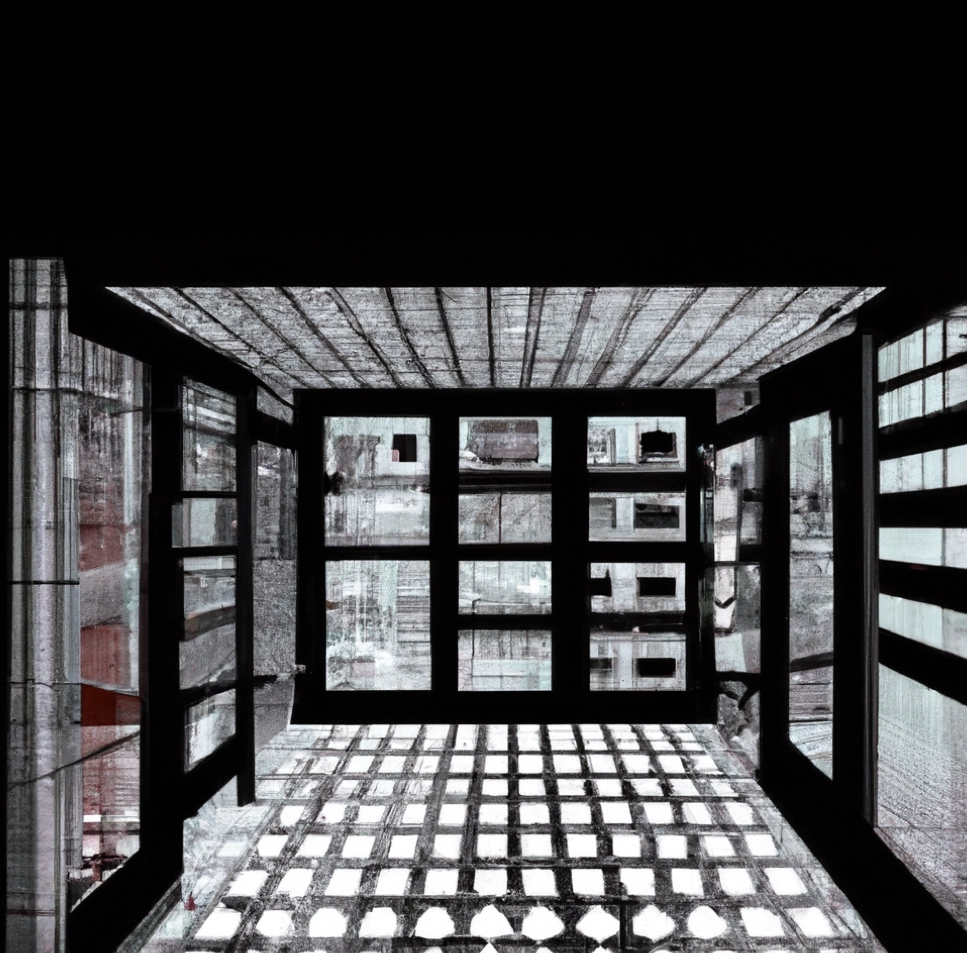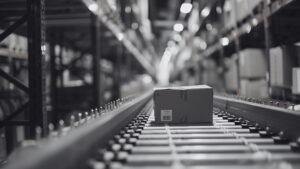Brick-and-mortar (B&M) stores are everywhere in city streets and shopping malls to the outskirts of towns and villages. The stores sell products for consumers to purchase, view and try. While online retail has increased, B&M stores can continue to survive in the digital landscape.
Curious to learn more about B&M retail stores? Our guide goes through every aspect of how it works, including examples, tips, and the pros and cons.
What does brick-and-mortar mean?
Brick and mortar refers to a store in a physical location that sells products to customers face-to-face in a building it owns or rents. Customers can visit, try out items, purchase goods, and take part in other activities depending on the store.
Some companies of this type include grocery stores (Trader Joe’s), department stores (Nordstrom), and drugstores (Walgreens).
How brick-and-mortar stores work
Stores can vary, but generally fall into one or more of the following types:
- The store has items you can only purchase at the location
- Buy online and pick-up in-store options
- Department store where customers can try on clothes or test products before making a purchase
- Customer service experiences where a member of staff interacts with the potential customer to guide them through product options. This method is deployed by Lush and others in the beauty industry.
pass_by’s email newsletter is the easiest way to get the latest updates and insights. Get inside scoops on AI-driven technologies, trends in retail, and tips from experts all in one.
The pros and cons of operating a brick-and-mortar retail store
In the age where digital solutions are taking over various industries, B&M retails are still holding their ground. But as you might already know, your conventional retail business comes with its fair share of advantages and disadvantages. Understanding these is key to surviving the e-commerce wave.
| Pros | Cons |
| Ability to target offline and online customers | Purchasing too much or too little stock |
| Offers a personal experience with greater customer service | Higher operating costs and costs of staffing |
| Can be more effective for products that aren’t easily shipped or that the customer prefers to see in person before purchasing | Location-specific and can limit your business’ reach |
The pros
1. Target offline and online customers
Around 20% of all retail sales happen online. That number is only continuing to grow. At some point, the vast majority of customers will make an online purchase.
However, having a store people can visit in person offers new opportunities to grow your business and attract new customers.
Some customers may prefer to shop in-person in general or on occasion, such as:
- Older demographics
- Customers looking for a product of a specific size or type
- Social shoppers visiting a store as part of an activity
To make the most of online and face-to-face shoppers, retail businesses are practicing the balancing act of “click and collect”. This method lets customers make a purchase online, and then collect it from the retail store – often faster and more convenient for some than standard delivery.
2. Offers a personal experience with greater customer service
Consumers can speak with employees face-to-face at the store and have their questions answered. For specific questions or help with finding a specific product, members of staff are an essential part of great customer service.
Stores can add to the shopping experience where customers can test products, such as trying on clothes in an H&M or having lunch in an IKEA cafe.
3. Effective for specific products
A global survey conducted by YouGov in 2022 found data that over half the global audience prefers to buy their groceries (60%), clothes (52%), and vehicles (52%) from physical stores. Some of these products are either difficult to ship or the customer simply wants to see them before the transaction is complete.
Seeing a product in person gives the customer a greater sense of security as the odds of being happy with the product are more likely. At least 30% of all products ordered online are returned as compared to 8.89% in B&M stores.
The cons
1. The low price competition
Commercial retail spaces are more expensive to operate than an online store. The business must pay its employees, insurance, utility bills, and other expenses. Businesses with lower overhead costs and online-only businesses can offer lower prices for their goods, which can affect your sales.
2. Higher staffing costs
1 in 5 say lower staffing costs are a major advantage for online businesses.
Operating an online-only retail business does have some staffing costs. For example, you may need to hire a freelance website designer to update your online store.
However, a brick-and-mortar store has many more staffing costs to cover on a regular basis. These costs can be harder to bear for SMEs, start-ups, and new companies.
3. Location limited
An online store can potentially reach customers in other regions of the country and globally. A retail store can act as a pick-up location for consumers in the local area, but its reach is much more limited overall.
Why brick-and-mortar is still important
Classic, in-person shopping shouldn’t be underestimated. Shoppers who visit physical stores are more likely to make impulse purchases. In-person shopping has the added benefits of:
- Allowing customers to physically interact with products
- See an immediate range of alternatives or related products on the shelf
- Convenience. Sometimes it’s easier to go to the store and grab what you need than wait for a delivery, even if the delivery is the same day
Will brick-and-mortar stores survive?
There are still many reasons to operate a retail store offline. E-commerce has changed the retail industry, but brick-and-mortar is changing with it by adapting to the digital landscape and consumer demand for greater convenience. For example, 90% of consumers prefer to shop in physical stores for immediate product availability and that number doesn’t seem to be decreasing.
Brick-and-mortar will continue to survive, but not as we typically think of it. Stores can survive and even thrive by including marketing techniques, online shopping options, and using the right data to predict how much stock you need. To help a retail business survive and thrive in the digital age, here are some top tips:
- Update your retail marketing strategy to include relevant social media platforms your audience uses
- Integrate omnichannel experiences
- Make use of festivals and events
1. Update your retail marketing strategy
An effective marketing strategy is a strong, essential pillar for any brick-and-mortar store. To survive against retail giants and online stores, have a strategy that involves:
- Research of competitors
- Scheduling posts in advance
- Tracking marketing performance and adjusting as needed
- Content that pushes your store and products
2. Integrate omnichannel experiences
63% of shopping occasions begin online, but it doesn’t always finish there. An omnichannel experience refers to a service that offers a seamless customer service and shopping experience across all platforms and devices.
- Give your customers the option of curbside pick-up or in-store pick-up
- Consider creating an app for your store. Depending on your industry, this may not be required.
- Have a consistent brand voice across all channels
- Give staff Ipads in-store to find up-to-date product information and place orders for customers
- Use geo-location data to target customers within a specific area with limited-time in-store discounts
- Add stock availability details to your online store
3. Making use of festivals and events
Keep an eye on local events where your store is located. These days will have increased foot traffic. Events such as Flack Friday, Thanksgiving, and Boxing Day sales are already a given. Depending on your location, local events such as county fairs, are an event to capitalize on.
- At a minimum, on social media, use your brand’s pages to post celebrating these holidays.
- When your store is open during these times and events, tell your audience and consider pinning it to the top of your page.
Next, consider running your own events. These can be classes, workshops, talks, or local meetups. This can help to build community and local recognition around your brand.
7 types of brick-and-mortar stores
Though the surge of e-commerce has reshuffled the deck for many retail establishments, countless businesses are still operating from physical storefronts offline. Let’s explore some of the typical examples of these operations.
- Fashion stores: trying on clothes is a classic example of the retail experience. Retailers in the fashion industry often have a physical location to allow consumers to try products before purchasing. For businesses offering online and offline shopping, a good returns policy is also essential.
- Department stores: the store contains multiple departments offering many product types, but is usually centered around a need or theme such as home goods.
- Specialty stores: these stores offer products of typically one category in one space, such as furniture, antiques, and sporting goods.
- Food stores: supermarkets and local grocers offer produce to buy in person. These stores may also offer delivery or click-and-collect options.
- Discount stores: products offered may be similar to convenience, food, and department stores but at discount prices. These stores operate on lower overhead costs than other examples of retail stores.
- Convenience stores: everyday products including household essentials (toilet paper, milk, etc.).
- Drugstores: health-related and beauty products for convenient purchases when in need.
What is the future of brick-and-mortar retail?
The future of brick-and-mortar retail stores is a transformation of technological developments, whereby retailers offer an omnichannel experience to build consistent and close relationships with consumers across all devices and platforms.
To survive and thrive, retailers should harness the potential of predictive analytics. Recieve predictions on consumer trends up to 3 months in advance to make informed choices. Plan higher-impact campaigns, adjust store hours for cost-effectiveness, and more with highly accurate data at your fingertips.
Brick-and-mortar FAQs
How many retail stores are in the USA?
There are an estimated 1.06 million retail stores across the United States as of 2023. The chains with the most stores in the United States were Dollar General and Dollar Tree.
What is brick-and-mortar also known as?
The term brick-and-mortar is often shortened to B&M. It refers to a retail business with at least one physical location.






